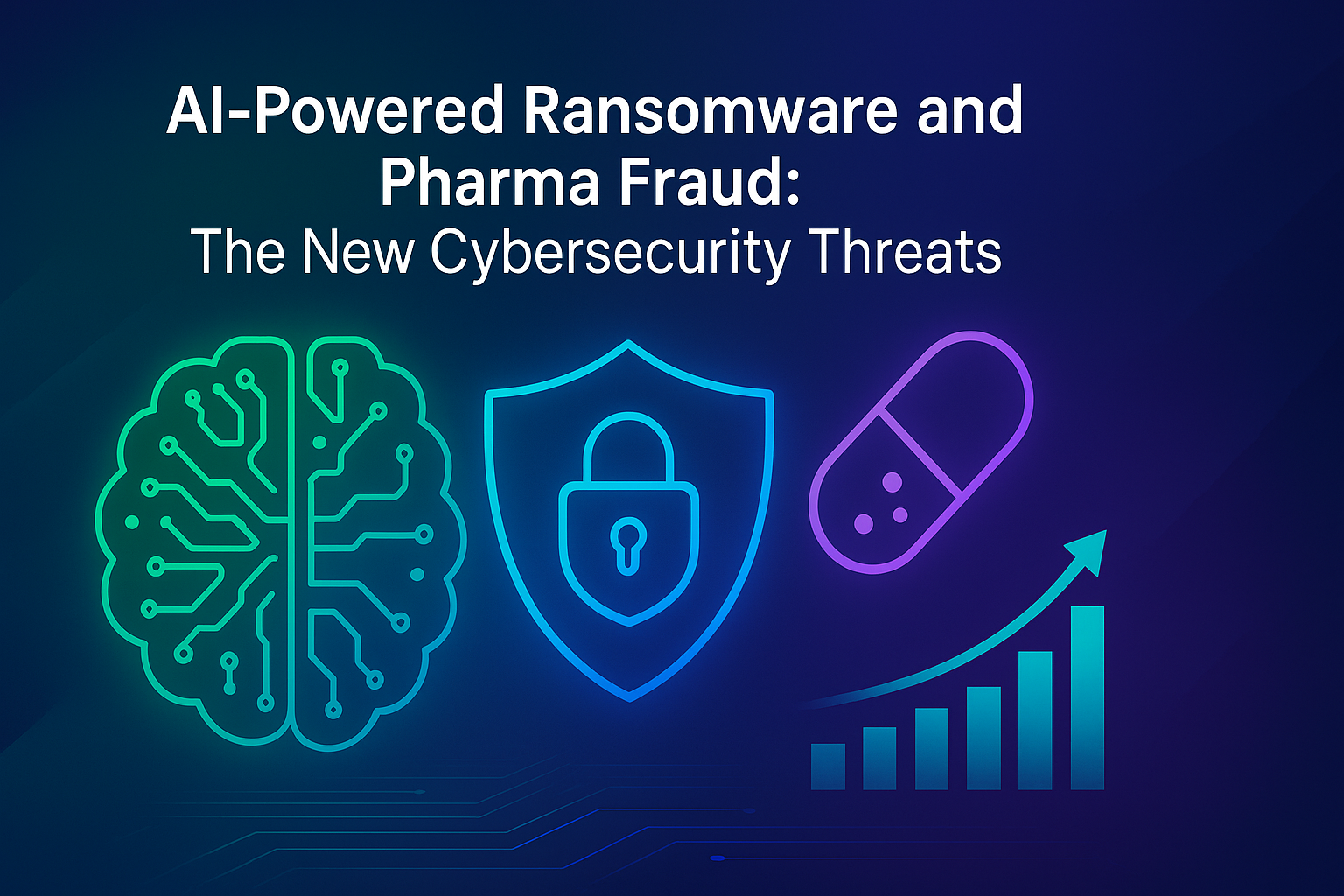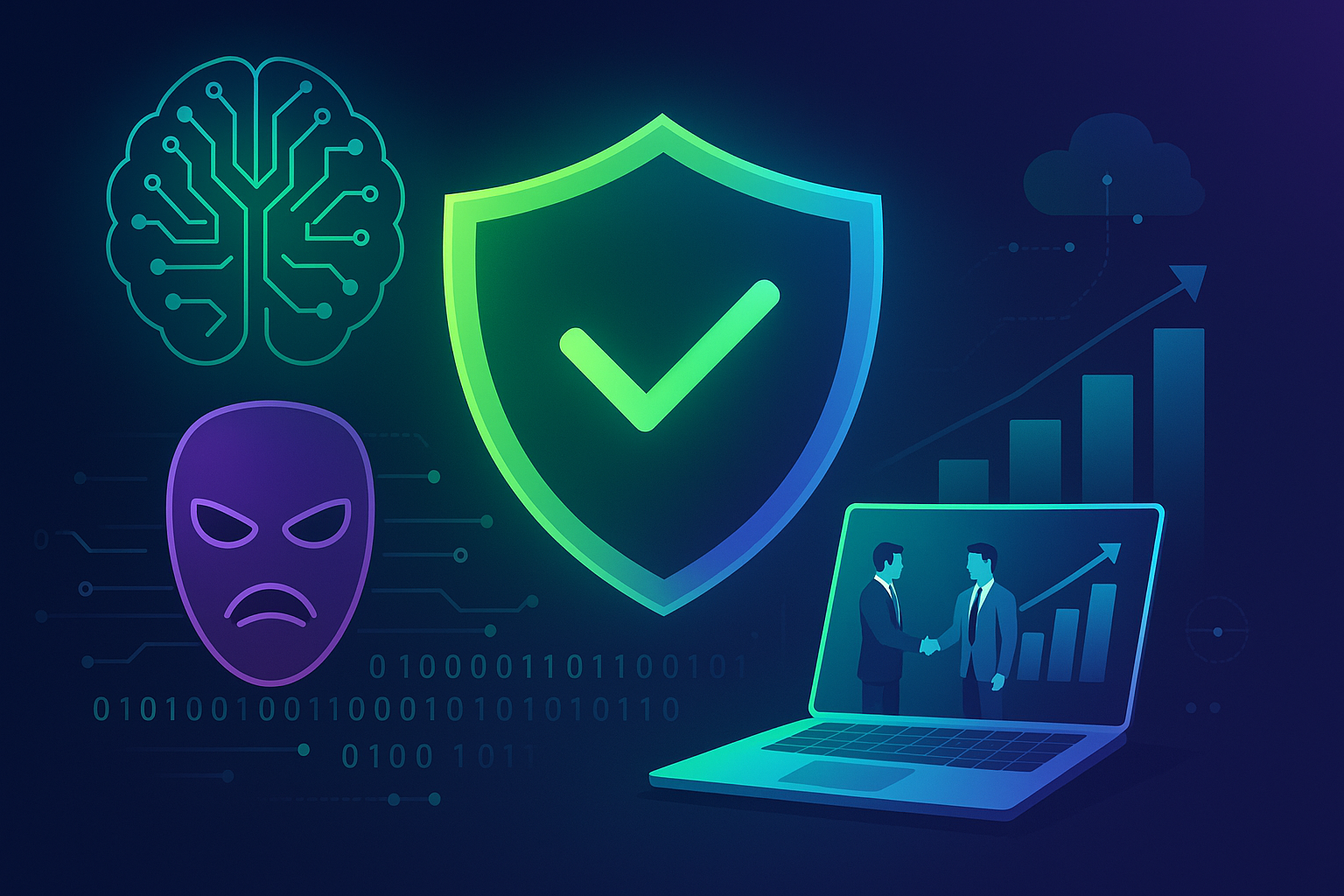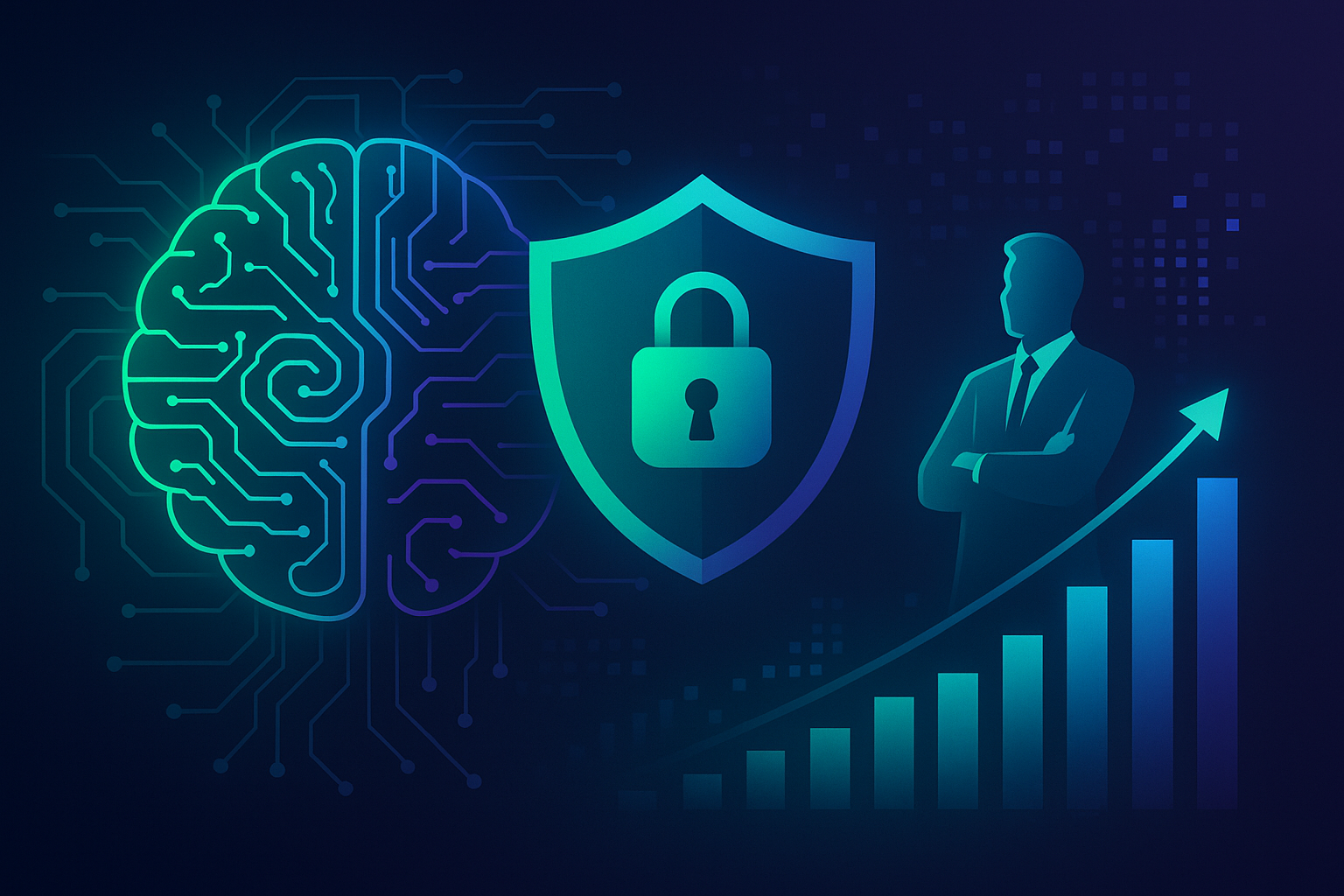Understanding the Rise of AI-Powered Ransomware and Pharma Fraud
Cybersecurity threats are evolving at a breakneck pace, and two new adversaries have entered the digital battlefield: AI-powered ransomware and pharmaceutical fraud. These threats mark a significant shift in the tactics used by cybercriminals, leveraging artificial intelligence (AI) and exploiting vulnerable healthcare systems. As these digital dangers grow in sophistication and impact, businesses and organizations must adapt quickly to protect sensitive data and critical infrastructure.
The emergence of AI-powered ransomware changes the game for both attackers and defenders. By integrating machine learning algorithms, cybercriminals can create malware that adapts in real-time, identifies weak points, and evades traditional defenses. Meanwhile, the rise in pharmaceutical fraud—where bad actors exploit digital supply chains, fake medications, and manipulate healthcare systems—adds another layer of complexity to cybersecurity strategies.
In this article, we’ll explore how these threats are transforming the cybersecurity landscape, what businesses can do to stay ahead, and how Hodeitek’s cybersecurity services can help you protect your digital assets from the latest wave of intelligent cyberattacks.
What Is AI-Powered Ransomware?
Defining AI-Powered Ransomware
AI-powered ransomware is a new breed of malware that uses artificial intelligence and machine learning to enhance its effectiveness. Unlike traditional ransomware, which follows predefined scripts, AI-powered variants can analyze system behavior, detect weaknesses, and adapt attacks in real time. This makes them harder to detect and defend against using conventional security tools.
These advanced attacks are capable of learning from the environment they infiltrate. For instance, they can prioritize high-value targets, determine the best time to execute encryption, and even disable specific antivirus programs. The automation of decision-making processes enables these tools to spread faster and more efficiently through networks.
The impact of such adaptability is alarming. Enterprises may not realize they’ve been compromised until critical systems are locked down and ransom demands are issued. This makes proactive threat detection and response more critical than ever before.
How AI Enhances Traditional Ransomware
The integration of AI into ransomware development allows attackers to refine their strategies. Machine learning algorithms can analyze system logs, monitor user behavior, and detect patterns that reveal weak points. This enables ransomware to identify which files to encrypt first, which systems are most crucial, and how to avoid detection by endpoint protection solutions.
For example, by using AI, ransomware can avoid triggering alarms from standard signature-based antivirus programs. Instead of relying on known malware signatures, AI-powered ransomware modifies itself dynamically, making it harder for security teams to recognize the threat early.
Moreover, AI can support phishing campaigns by generating more convincing emails and selecting the right targets based on publicly available data, increasing the likelihood of successful breaches.
Real-World Incidents Involving AI-Powered Ransomware
While AI-powered ransomware is still an emerging threat, several reports indicate that cybercriminals are already experimenting with these techniques. One such case involved an attack on a European financial institution, where the malware altered its behavior in real time to evade detection and encrypt critical systems during off-peak hours.
Security analysts at Kaspersky and CrowdStrike have noted an increase in ransomware strains that demonstrate adaptive behavior. These strains can delay execution until they detect low activity, or bypass multi-factor authentication systems by mimicking user input patterns.
These incidents highlight the growing need for advanced detection capabilities like EDR, XDR, and MDR solutions, which can identify and neutralize threats that behave differently from known malware.
Pharma Fraud: The Digital Threat to Healthcare Systems
What Is Pharmaceutical Fraud?
Pharmaceutical fraud refers to the manipulation of healthcare and drug-related systems for financial or political gain. This can include counterfeit medications, data breaches involving medical records, and the creation of fake supply chains that distribute substandard or dangerous drugs.
With the digitization of healthcare services, attackers now have more opportunities than ever to infiltrate systems and manipulate data. From altering prescription information to stealing intellectual property from pharmaceutical companies, the risks are manifold.
This type of fraud not only endangers patient lives but also undermines trust in healthcare institutions. It can have widespread consequences, including public health crises and massive financial losses for affected organizations.
How Cybercriminals Exploit the Pharma Sector
Cybercriminals target the pharma sector using multiple tactics. These include phishing campaigns targeting hospital staff, exploiting vulnerabilities in outdated medical equipment, and infiltrating supply chain systems to distribute counterfeit products.
Hackers may also use ransomware to lock down hospital systems, delaying critical treatments until a ransom is paid. In the case of research and development, attackers often aim to steal proprietary data related to drug formulas or clinical trials.
Additionally, bad actors may use AI to analyze publicly available data about healthcare institutions, enabling them to identify the weakest entry points for attack.
Recent Cases of Pharma Fraud
In one recent case, a major pharmaceutical company was targeted by a ransomware attack that halted production for several days, costing millions in losses. Investigations revealed that attackers used AI to identify the most vulnerable systems in the company’s manufacturing process.
Other examples include the distribution of fake COVID-19 vaccines, which were tracked through dark web marketplaces and linked to sophisticated fraud networks. These incidents demonstrate the critical need for robust cybersecurity frameworks in the healthcare sector.
Organizations can mitigate these risks by implementing vulnerability management services and continuous monitoring systems that detect and neutralize threats before they cause damage.
Why AI-Powered Threats Are Harder to Stop
Dynamic Behavior and Evasion Techniques
One of the core strengths of AI-powered ransomware lies in its ability to adapt. Traditional malware follows a fixed path of execution, but AI-enabled threats analyze their environment and change tactics accordingly. This makes them extremely difficult to detect using signature-based antivirus tools.
These threats often use polymorphic code, which changes its structure during propagation, and can simulate legitimate system processes to avoid detection. AI allows malware to learn which actions raise red flags and avoid them in future iterations.
Given this level of sophistication, organizations need to rely on behavior-based detection systems that can recognize anomalies in real time.
Automated Target Prioritization
AI-powered threats can scan networks to identify and prioritize high-value targets. This includes servers containing sensitive data, financial systems, or intellectual property. Once these targets are identified, the ransomware can focus its efforts on causing the maximum amount of disruption.
In practice, this means that attackers can achieve more damage with less effort. They don’t need to encrypt every file—just the ones that will force an organization to pay the ransom quickly.
This strategic approach to cybercrime requires equally intelligent defenses, such as SOC as a Service (SOCaaS), to continuously monitor and respond to emerging threats.
Leveraging AI for Social Engineering
Social engineering attacks have become more dangerous with the integration of AI. Cybercriminals can now use natural language processing (NLP) to generate phishing emails that are nearly indistinguishable from genuine communications.
By analyzing social media and other public data, AI can tailor these messages to specific individuals, increasing the likelihood of a successful attack. This tactic is especially effective in spear phishing, where the attacker targets high-level executives.
To combat this, organizations need user awareness training and advanced email filtering systems that can detect context and behavioral anomalies in communication patterns.
How Hodeitek Helps You Defend Against AI-Powered Ransomware
Proactive Threat Detection with EDR, XDR, and MDR
Hodeitek offers robust EDR, XDR, and MDR solutions that provide proactive detection and response to advanced threats. These tools use AI and machine learning to analyze endpoints and network traffic, identifying suspicious behavior before damage occurs.
By integrating these tools into your cybersecurity stack, you can neutralize AI-powered ransomware before it locks down critical systems. These services also support forensic analysis and threat hunting, ensuring complete visibility into your digital environment.
EDR and XDR are particularly effective against threats that evolve over time, making them an essential component of any modern cybersecurity strategy.
Continuous Monitoring with SOCaaS 24×7
Our 24×7 SOC as a Service provides around-the-clock threat monitoring and incident response. With a dedicated team of cybersecurity experts, we can detect and contain threats in real time, minimizing impact on your operations.
SOCaaS also integrates threat intelligence and vulnerability management to offer a comprehensive security posture. This is especially valuable for industries like healthcare and finance, where threats are both persistent and highly targeted.
By leveraging our SOCaaS, you gain access to enterprise-grade protection without the overhead of maintaining an in-house security operations center.
Advanced Threat Intelligence and Risk Mitigation
Hodeitek’s Cyber Threat Intelligence (CTI) services provide actionable insights into emerging threats, including AI-powered ransomware and pharma fraud campaigns. These insights help organizations anticipate attacks and implement preemptive defenses.
We also offer tailored risk assessments and security audits to identify vulnerabilities and recommend mitigation strategies. This proactive approach ensures your cybersecurity measures are always aligned with the evolving threat landscape.
With Hodeitek, you can stay one step ahead of cybercriminals and protect your most valuable assets.
Call to Action: Protect Your Business from AI-Powered Threats
The rise of AI-powered ransomware and pharma fraud marks a turning point in cybersecurity. These sophisticated threats demand equally advanced defenses, combining real-time monitoring, threat intelligence, and adaptive response strategies.
Hodeitek offers comprehensive cybersecurity services tailored to defend against modern threats. From EDR and XDR to SOCaaS and Cyber Threat Intelligence, our solutions are designed to keep your organization safe.
Don’t wait until an attack happens. Contact us today to schedule a free consultation and learn how we can help you build a resilient cybersecurity infrastructure.
External Sources:






